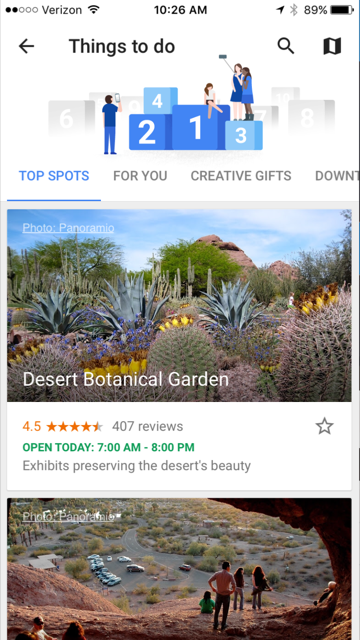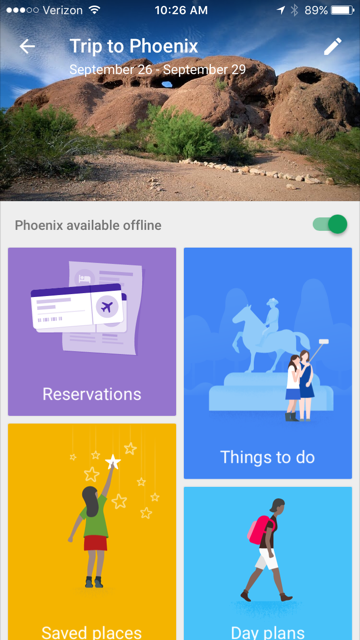By Megan Harr
Earlier this week, Google launched further into the world of travel with the release of Google Trips, a smartphone app that serves as a personalized tour guide. The app, which is available for Android or Apple devices, has the potential to shift travel data in a new direction by way of acting as a new front-end for existing information. By pulling data from Google Maps, Flights, and Places and marrying that information with travel information stored in your e-mail, Google is encouraging habitual use and ultimately shifting the way travelers utilize relevant information on-the-go. Not only does the app store reservation details in one place even without access to an Internet connection, it also suggests activities for what to do at a particular location based on weather, time of day, and past behavior.

Google Trips makes it easy to see which attractions are open and estimate how long it will take travelers to get from one destination to another, helping individuals make the most of their time. However, when travelers find a match to a restaurant, bar, hotel or area attraction that matches their itinerary, they cannot make a reservation without contacting the provider directly. By virtue of its design, Google Trips is more appropriately marketed as a place to store information about a trip once plans have already been made. For those in vacation mode, the app serves a very specialized function despite its early limitations.

Google has succeeded in developing a product that will likely be part of the travel experience for many. In addition to focusing attention to their own digital marketing strategies, hoteliers can supplement the information that travelers find on Google Trips with an editorial voice to provide their clients with the human touch that travel often demands. In that capacity, hoteliers can help guests craft truly personalized experience, helping them find places to go and things to do that travelers and the app may have not necessarily have known to look for. How can independent and branded properties begin to accomplish this this? A good place to start is with engaging content.


